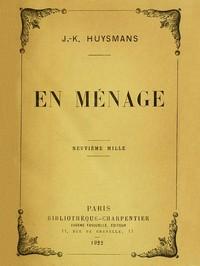Read this ebook for free! No credit card needed, absolutely nothing to pay.
Words: 31517 in 14 pages
This is an ebook sharing website. You can read the uploaded ebooks for free here. No credit cards needed, nothing to pay. If you want to own a digital copy of the ebook, or want to read offline with your favorite ebook-reader, then you can choose to buy and download the ebook.
PUBLISHED WEEKLY. NEW YORK, TUESDAY, MARCH 2, 1897. FIVE CENTS A COPY.
THE BATTLE OF OPEQUAN CREEK.
BY RICHARD BARRY.
General Sheridan, despite the reputation he had gained for dashing, reckless bravery, was withal a cautious commander. He did not believe in making long forced marches and hurling tired troops at an intrenched enemy. The success of a charge, in his mind, was due entirely to the freshness of the men, the fierceness of the onslaught, and the surprise occasioned to the enemy by sudden and unexpected movement.
Early in the month of September, 1864, Sheridan's army was encamped in the hills looking down into the little valley of the Opequan, a small, crooked stream about four miles from the town of Winchester. On the opposite side of the creek the Confederate army under General Early was intrenched in a strong position. The banks of the stream were steep and the crossings deep, requiring much care in fording.
General Wilson's division, followed by the infantry, was to clear the crossings of the Opequan on the road leading from Berryville to Winchester. South of the town was Abraham's Creek; it emptied into the Opequan and flanked the line of the Confederate intrenchments. On the north was a similar creek, named the Red Bud, which served the same purpose. Along these natural fortifications, and spreading across the rise of ground on the farther side of the Opequan, lay the whole force of Early's army. It was Sheridan's intention to take the centre first and overthrow it before the rest of the Confederate army, which was somewhat scattered, could come up to its assistance.
As it is of the cavalry's work in this fight that this short paper treats, it is best to move at once to the right of the Union line, where the mounted forces were expected to ford the creek.
It was almost pitch dark, and a few minutes after two in the morning, when the Second United States Cavalry, under the command of Captain T. F. Rodenbough, moved with the reserve brigade of the First Cavalry Division down the sloping ground toward the valley of the stream. Early's outposts and pickets were met some time before the ford was reached. There were a few hasty shots exchanged in the darkness, without any damage being done, and then the mounted pickets crossed to the safety of their own lines on the farther side.
A small force of the Union cavalry was dismounted on the road, and the outbuildings of a farm-house were occupied by a reserve force; while the regiment was deployed, mounted, in the fields to the right and left of the ruins of the old railroad bridge. Nothing was standing of this structure but the stone abutments. The bridge that crossed the creek diagonally to the roadway had been destroyed, but the water was fordable on either side. Now the forces waited for daylight. Long before the sun rose, as the dim light spread and widened, the enemy's infantry pickets could be seen hurriedly making preparations to resist any attempt at crossing on the part of the waiting cavalry.
The bank of the creek was very steep and thickly wooded. The leaves were yet on the trees, and the dark masses of armed men could be seen distinctly here and there in the few clearings. The railroad entered the hill-side through a deep cut, forming a ready-made intrenchment for the enemy's infantry and riflemen. One of the stone abutments and the adjoining pier were close to the entrance of the cut, and formed an angle with a wooded bluff directly in line with it.
Despite the fact that the men had been in the saddle almost the whole night, they were keen to move; and before sunrise General Merritt, in command of the First Division, ordered Colonel Lowell, who led the reserve brigade, to carry the ford and effect a lodgement on the farther bank. At once Colonel Lowell dismounted a portion of his command, and with a cheer the men dashed into the water, and holding their carbines high above their heads, plashed through the stream, many standing waist-deep and replying to the fire that was poured into them. The Fifth United States Cavalry and a portion of the Second Massachusetts infantry followed at once.
Rodenbough, who had been waiting with his men in one of the fields on the hill-side, received his orders to move. With a loud shout the regiment charged down the side of the hill to one side of the slowly advancing men on foot, dashed pell-mell through the ford, and, in the face of a terrible fire from the enemy's infantry, swept up the opposite incline on a dead run, making for the railway cut, where the Confederates were completely hidden from the Union fire.
Free books android app tbrJar TBR JAR Read Free books online gutenberg
More posts by @FreeBooks

: Studies on Epidemic Influenza: Comprising Clinical and Laboratory Investigations by University Of Pittsburgh School Of Medicine - Influenza; Influenza Epidemic 1918-1919


: En ménage by Huysmans J K Joris Karl - Married people Fiction; Man-woman relationships Fiction; French fiction 19th century; Novelists Fiction FR Littérature








